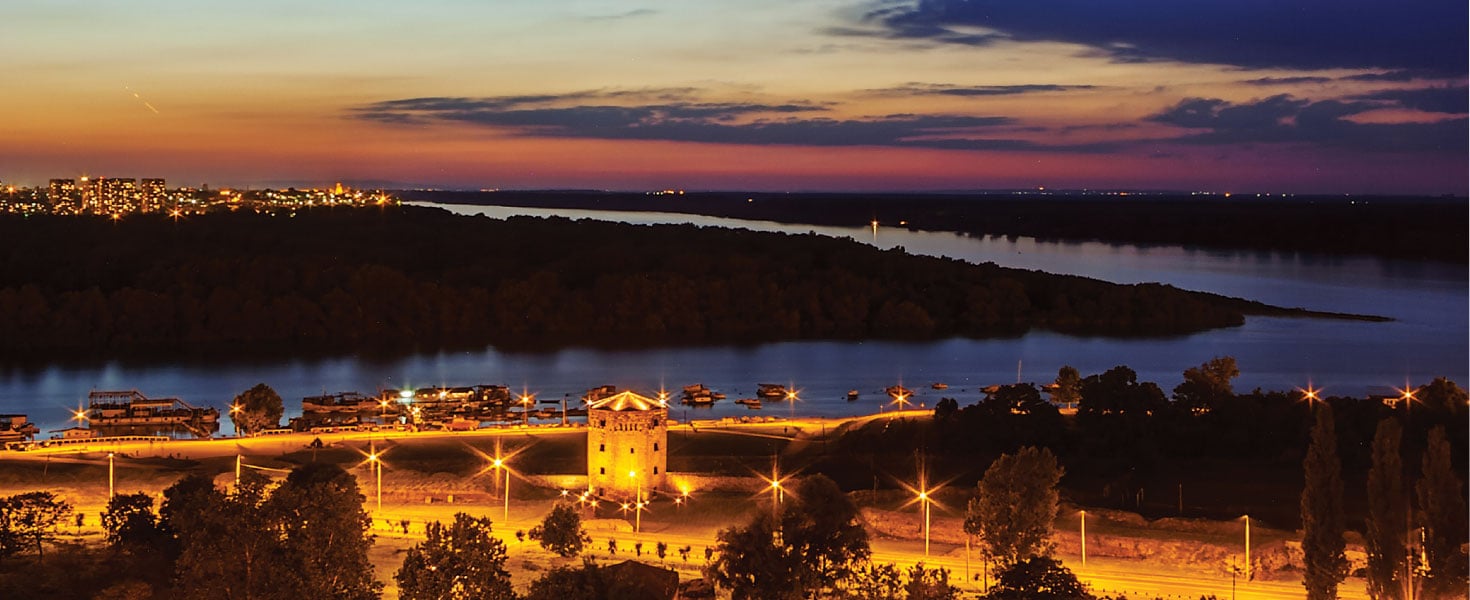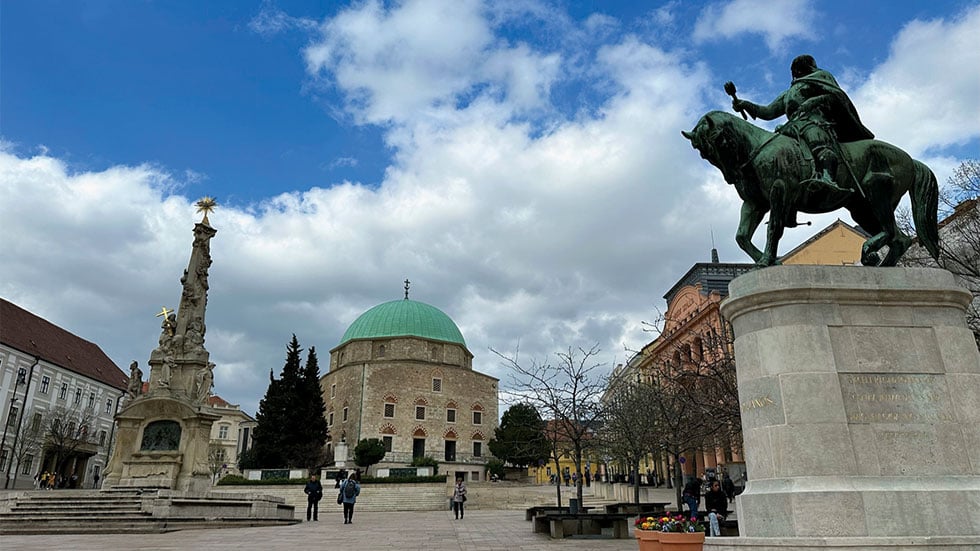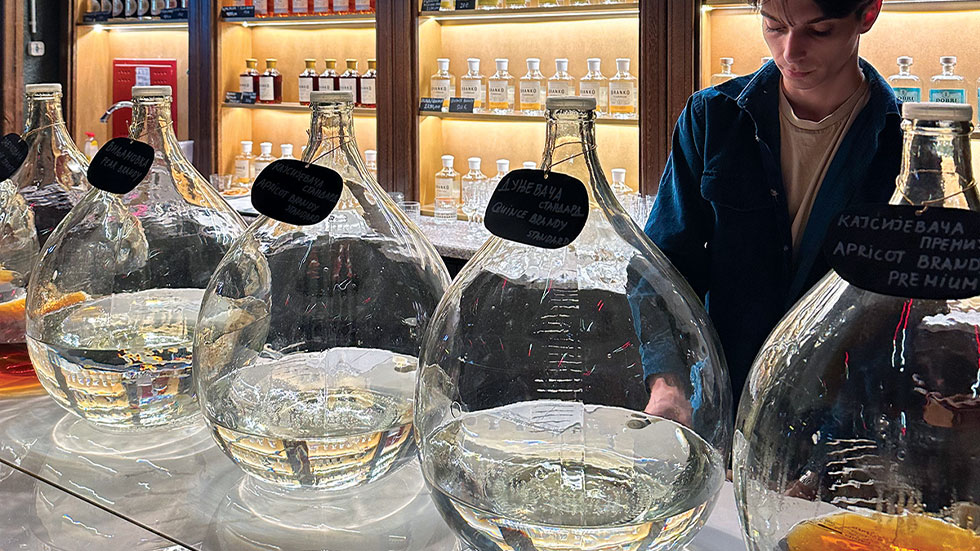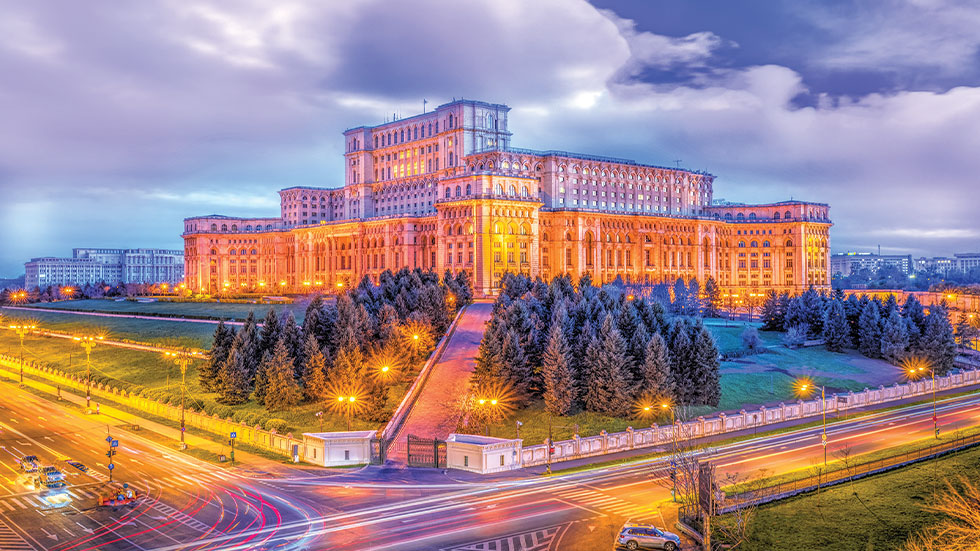Cruising the Lower Danube from Hungary to Romania
A cruise on the Lower Danube River brings lessons in history and life


Budapest at night was just as magical as we had remembered, with the lights of the Hungarian Parliament reflecting in the Danube River and Fisherman’s Bastion glowing atop Buda Castle Hill. The last time my daughter, Katrina, and I were here—seven years ago—we were boarding an AmaWaterways ship for a cruise on the Upper Danube through Hungary, Slovakia, Austria and Germany. Now, we had returned to board the flagship AmaMagna, which would take us on a seven-night journey on the Lower Danube through Hungary, Croatia, Serbia, Bulgaria and Romania. If the allure of visiting lands once behind the Iron Curtain had intrigued me initially, I would soon come to learn that the area’s dramatic history extended far into the past, and the stories of its people would be my most lasting memories.

Széchenyi Square in Pecs, with the domed Mosque of Pasha Qasim Victorious in the background; Photo by Theresa Gawlas Medoff
RUINS OF EMPIRES PAST
The first city on our itinerary, 2,000-year-old Pecs, Hungary, shares a history with the rest of the region of being at the center of a tug-of-war between empires. Near Pecs Cathedral, we saw evidence below ground of the Roman Empire’s presence: the UNESCO-listed excavated remains of a 4th-century Roman cemetery with its frescoed burial chambers. Above ground, we toured a Christian church that retained architectural elements of its earlier history as a mosque built during the 16th-century Ottoman conquest. We saw similar mashups of empires and centuries in cities all along our itinerary.
A modern touch came as we walked toward Széchenyi Square in downtown Pecs: a purpose-built metal sculpture heavy with padlocks bearing the names of lovers. A sign of resiliency, I mused: Even as empires pass, it’s people and relationships that matter. Cruise manager Radi Markovic had alluded to this earlier: “We understand things differently here in Eastern Europe because we’ve seen a lot of empires come and go,” she had said.
In Vukovar, Croatia, we heard about the 1990s war with Serbia from Ivor, our 30-something tour guide, whose family had fled as the town was falling, returning from exile seven years later to a town 90 percent destroyed—and still dangerously laced with mines.
“My friend and I used to play soccer on a patch of pavement near an open field. When the ball went out of bounds, we took turns retrieving it,” Ivor recounted. “The one who stayed behind would lie down on the ground with his hands over his head in case a bomb exploded.” Thankfully, that never happened.
Despite the destruction, the people of Vukovar rebuilt their town to look as it had, with its mix of Baroque and Art Nouveau buildings. Still, the town remains depressed, with one in three unemployed.

Belgrade Urban Distillery serves up rakia, Serbia’s national drink; Photo by Theresa Gawlas Medoff
BELGRADE AND BEYOND
But our trip was not all stories of war. The people we met were friendly and helpful, and even though we spoke only English, we navigated easily around the cities and towns. After a guided tour of Belgrade, Serbia, that included the Nikola Tesla Museum, we explored the city on our own, shopping in boutiques and indulging in cups of thick hot chocolate. In a place where residents spend hours conversing over a cup of coffee, the other patrons in the café were no doubt bemused by our drink-and-dash stop.
We returned to the ship just in time to join a group visit to Belgrade Urban Distillery to taste rakia. Serbia’s national drink, it resembles brandy, and we sampled the traditional plum flavor as well as cherry, apricot and pear. Nicely warmed on our insides, Katrina and I and another mother–daughter pair we’d befriended on the ship walked back downtown for dinner at a traditional Serbian restaurant. There, to the accompaniment of live folk music, we feasted on schnitzel, grilled meat and pork-and-beef stuffed cabbage.
The following morning, our ship docked right beside the reconstructed 14th-century Golubac Fortress, a magnificent 10-tower castle built into the side of a mountain on the site of a former Roman settlement. The fortress had changed flags with empires: Turkish, Austrian, Bulgarian, Hungarian, Serbian. So little valued was the historic site at times that, from the 1930s to the early 21st century, a highway ran right through it. Vehicle scrape marks remain visible on the rock walls.
During meals, cocktail hours and folk performances on board the ship, we struck up fast friendships with shipmates. So, it was a convivial group that gathered in the glass-walled Al Fresco trattoria at the bow of the ship to take in the scenery as the ship sailed through the verdant Carpathian and Balkan mountains, dotted by small villages and RV campgrounds. We sipped tea and snapped photos of the Roman Tablets that marked the opening of the first Roman road in the area, the colossal rock face carving of Decebalus (whose empire fell to the Romans) and the four narrow gorges known as the Iron Gates, among the most scenic spots on the Danube.

The sprawling Palace of the Parliament in Bucharest, Romania; Photo by Carturesti/Shutterstock
SHADOWS OF THE SOVIET EMPIRE
One afternoon as the ship was sailing, Markovic presented a humor-flecked PowerPoint about what life had been like in Eastern Europe during the Communist era. She joked about low-quality products, bribing officials and waiting in line for everything. But she also told a poignant story of the time her mother’s friend almost faced punishment for taking her children to a neighboring country to buy better-quality shoes—only one pair was allowed per person, and they already had their allotment. A kind border guard let them reenter—with the new shoes.
Large Communist-era government buildings were a fixture in several of the places we visited, but none was as jaw-dropping as the aptly named Palace of the Parliament in Bucharest, Romania. Sprawling for almost 4 million-square-feet, it’s the second-largest administrative building in the world behind the Pentagon. At the base of Parliament Hill unfolds a Champs-Élysées-inspired avenue. The grandeur of the building contrasted with the city’s many drab Communist-era apartment blocks, which were as poorly made as they looked, our guide said, though people still live in them and have tried to spruce them up. After our tour, we wandered the cobbled streets of Old Town, lively with people dining at outdoor cafés, ducking into shops and chatting in small groups. What times this city has seen, I reflected, as we entered a sparkling five-story bookstore filled with shoppers.

The AmaMagna; Photo courtesy of AmaWaterways
TWICE AS NICE ON THE AMAMAGNA
The AmaMagna is the largest ship in AmaWaterways’ fleet, measuring 443 feet long and a whopping 72 feet wide. That’s twice the width of most ships cruising European rivers. But it doesn’t come with twice the passengers—not even close. The typical AmaWaterways river cruise ship carries about 156 passengers compared with AmaMagna’s 196 guests (with 70 crew members to serve them). That extra width allows for 50 percent of the accommodations on board to be suites, each with full balconies. You also get a double-size top deck for viewing the scenery, playing pickleball, or relaxing in the pool and hot tub after a day of sightseeing.
At AmaMagna’s Zen Wellness Studio, you can join in a group class—running the gamut from spinning to yoga—or exercise on your own using cardio equipment and free weights.
The ship offers four restaurants, including the Chef’s Table featuring an oh-so-delicious tasting menu, and a large lounge for post-dinner partying.
